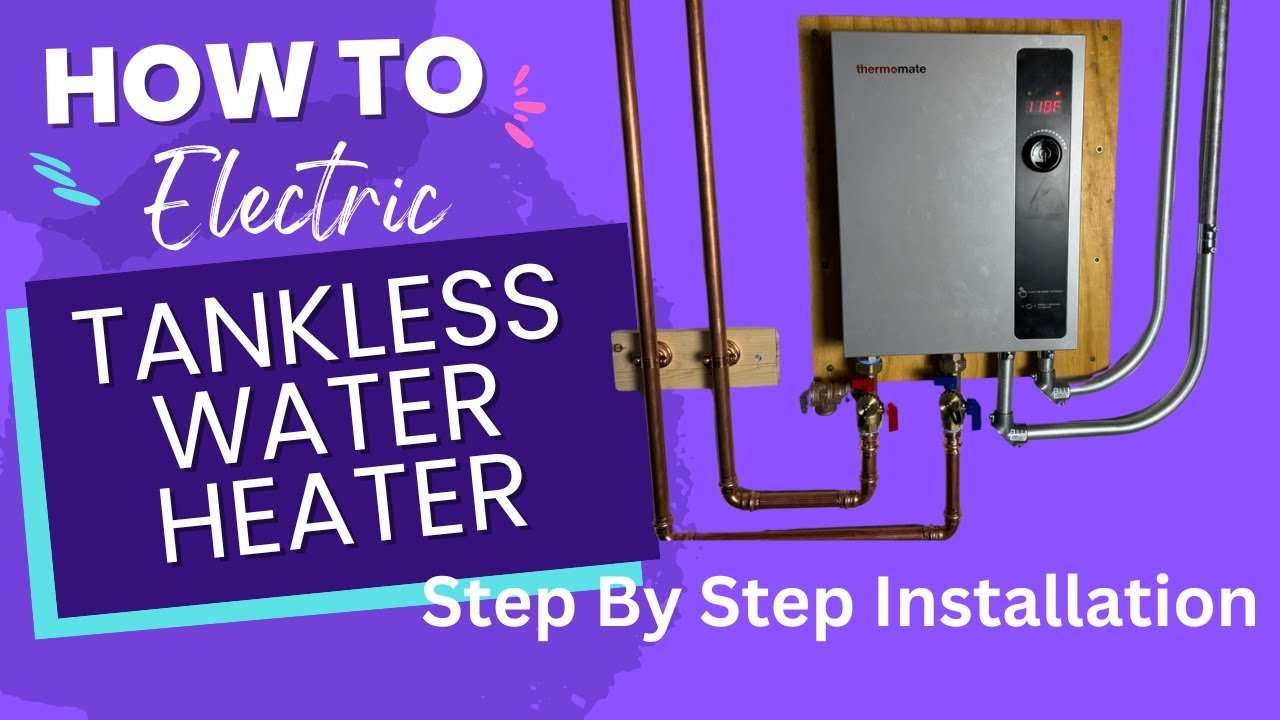The decision to upgrade to an electric tankless water heater represents a significant step towards energy efficiency and on-demand hot water. However, before diving into this exciting home improvement project, understanding the specific electric tankless water heater installation requirements is absolutely crucial. These requirements encompass electrical capacity, plumbing connections, and adherence to local building codes, all of which contribute to a safe and effective installation. Ignoring these prerequisites can lead to costly mistakes, safety hazards, and ultimately, a system that fails to deliver the promised benefits. Understanding the nuances of electric tankless water heater installation requirements ensures a smooth transition and reliable hot water for years to come.
Electrical Considerations
One of the most important aspects of installing an electric tankless water heater is ensuring adequate electrical capacity. These units demand a substantial amount of power, often requiring dedicated circuits and potentially an upgrade to your electrical panel.
Amperage Requirements
- Assess Your Needs: Determine the appropriate size and model of tankless heater based on your household’s hot water demand. Different models require different amperage.
- Dedicated Circuits: Each tankless heater typically requires one or more dedicated circuits with appropriate amperage ratings. Consult the manufacturer’s specifications.
- Professional Inspection: A qualified electrician should inspect your electrical panel and wiring to ensure it can handle the increased load. They can advise on necessary upgrades.
Plumbing Connections
Proper plumbing connections are essential for the safe and efficient operation of your electric tankless water heater. This includes ensuring the correct pipe size, materials, and proper venting (although electric models don’t require traditional venting like gas models).
Piping Materials and Size
- Pipe Size: The pipe size should be adequate to handle the flow rate required by the tankless heater. Consult the manufacturer’s recommendations.
- Material Compatibility: Ensure the piping material is compatible with hot water and local plumbing codes. Copper or PEX are common choices.
- Professional Plumbing: It’s highly recommended to hire a licensed plumber to handle the plumbing connections, ensuring they are leak-proof and compliant with regulations.
Safety and Building Codes
Adhering to local building codes and safety regulations is paramount during the installation of any electrical appliance, including tankless water heaters. This protects your home and family from potential hazards.
Compliance and Permits
- Building Permits: Check with your local building department to determine if a permit is required for the installation.
- Code Compliance: Ensure the installation complies with all applicable electrical and plumbing codes;
- Professional Installation: Hiring a qualified electrician and plumber helps ensure compliance with these regulations.
Consider this comparison of potential wiring needs based on different tankless water heater models:
| Tankless Water Heater Model | Amperage Required | Wire Gauge | Circuit Breaker |
|---|---|---|---|
| Model A (Small) | 50 amps | 6 AWG | 60 amp double-pole |
| Model B (Medium) | 80 amps | 4 AWG | 90 amp double-pole |
| Model C (Large) | 100 amps | 2 AWG | 110 amp double-pole |
Installation success hinges on careful planning and adherence to all guidelines. Ultimately, proper preparation will ensure that your new electric tankless water heater installation requirements are met, providing you with reliable and efficient hot water for years to come.







